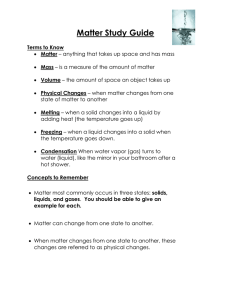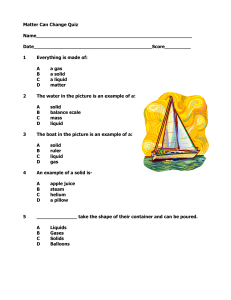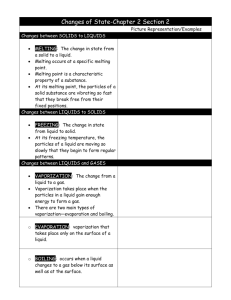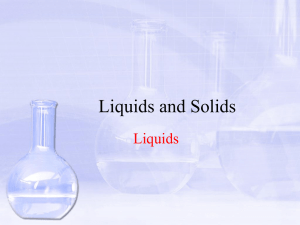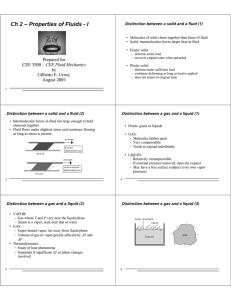PHASE CHANGES Substances can change from one phase to
advertisement
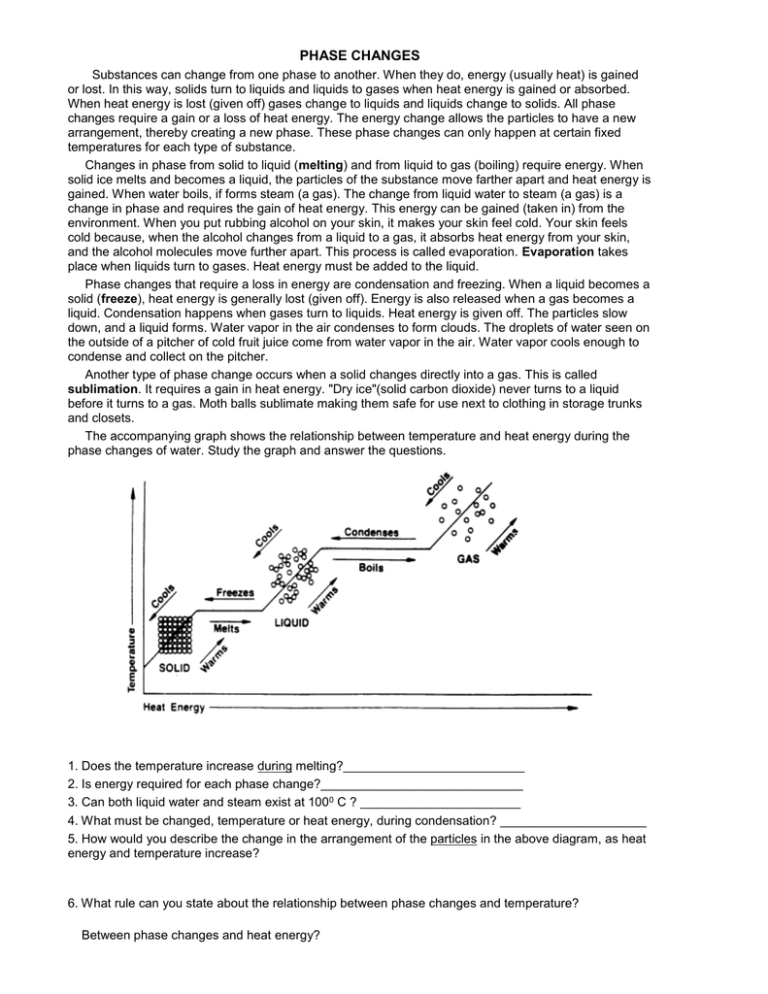
PHASE CHANGES Substances can change from one phase to another. When they do, energy (usually heat) is gained or lost. In this way, solids turn to liquids and liquids to gases when heat energy is gained or absorbed. When heat energy is lost (given off) gases change to liquids and liquids change to solids. All phase changes require a gain or a loss of heat energy. The energy change allows the particles to have a new arrangement, thereby creating a new phase. These phase changes can only happen at certain fixed temperatures for each type of substance. Changes in phase from solid to liquid (melting) and from liquid to gas (boiling) require energy. When solid ice melts and becomes a liquid, the particles of the substance move farther apart and heat energy is gained. When water boils, if forms steam (a gas). The change from liquid water to steam (a gas) is a change in phase and requires the gain of heat energy. This energy can be gained (taken in) from the environment. When you put rubbing alcohol on your skin, it makes your skin feel cold. Your skin feels cold because, when the alcohol changes from a liquid to a gas, it absorbs heat energy from your skin, and the alcohol molecules move further apart. This process is called evaporation. Evaporation takes place when liquids turn to gases. Heat energy must be added to the liquid. Phase changes that require a loss in energy are condensation and freezing. When a liquid becomes a solid (freeze), heat energy is generally lost (given off). Energy is also released when a gas becomes a liquid. Condensation happens when gases turn to liquids. Heat energy is given off. The particles slow down, and a liquid forms. Water vapor in the air condenses to form clouds. The droplets of water seen on the outside of a pitcher of cold fruit juice come from water vapor in the air. Water vapor cools enough to condense and collect on the pitcher. Another type of phase change occurs when a solid changes directly into a gas. This is called sublimation. It requires a gain in heat energy. "Dry ice"(solid carbon dioxide) never turns to a liquid before it turns to a gas. Moth balls sublimate making them safe for use next to clothing in storage trunks and closets. The accompanying graph shows the relationship between temperature and heat energy during the phase changes of water. Study the graph and answer the questions. 1. Does the temperature increase during melting?__________________________ 2. Is energy required for each phase change?_____________________________ 3. Can both liquid water and steam exist at 1000 C ? _______________________ 4. What must be changed, temperature or heat energy, during condensation? _____________________ 5. How would you describe the change in the arrangement of the particles in the above diagram, as heat energy and temperature increase? 6. What rule can you state about the relationship between phase changes and temperature? Between phase changes and heat energy?
